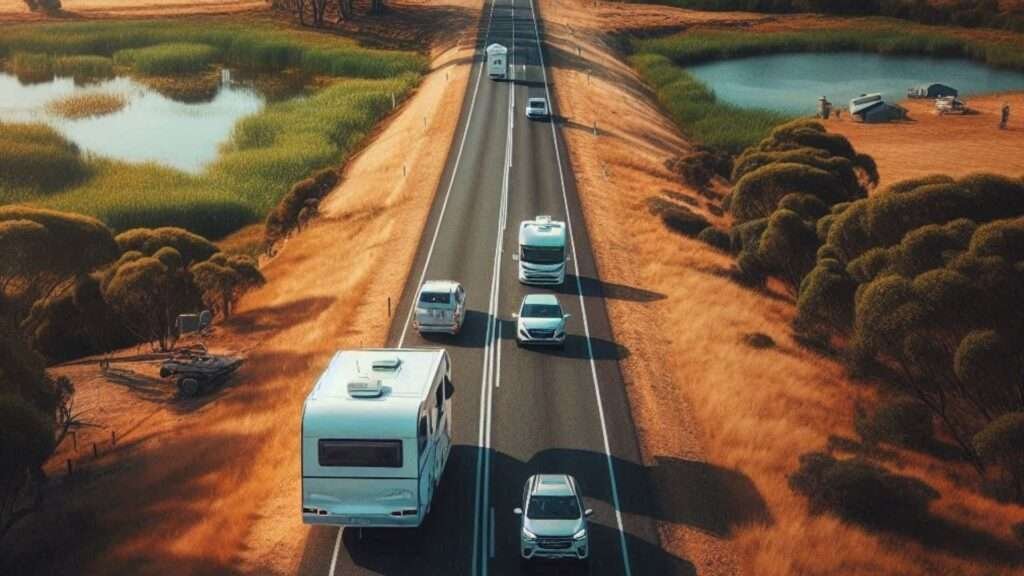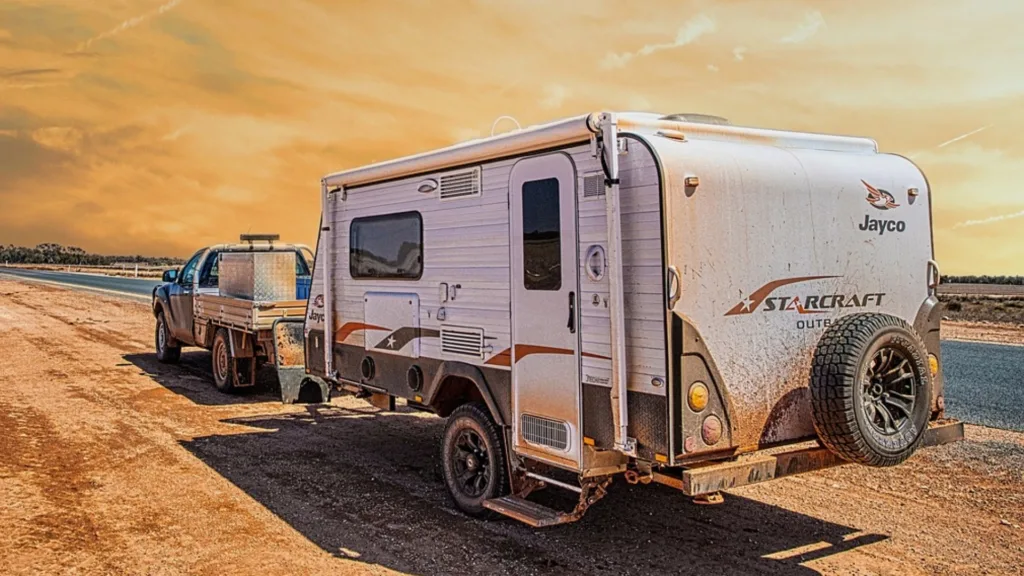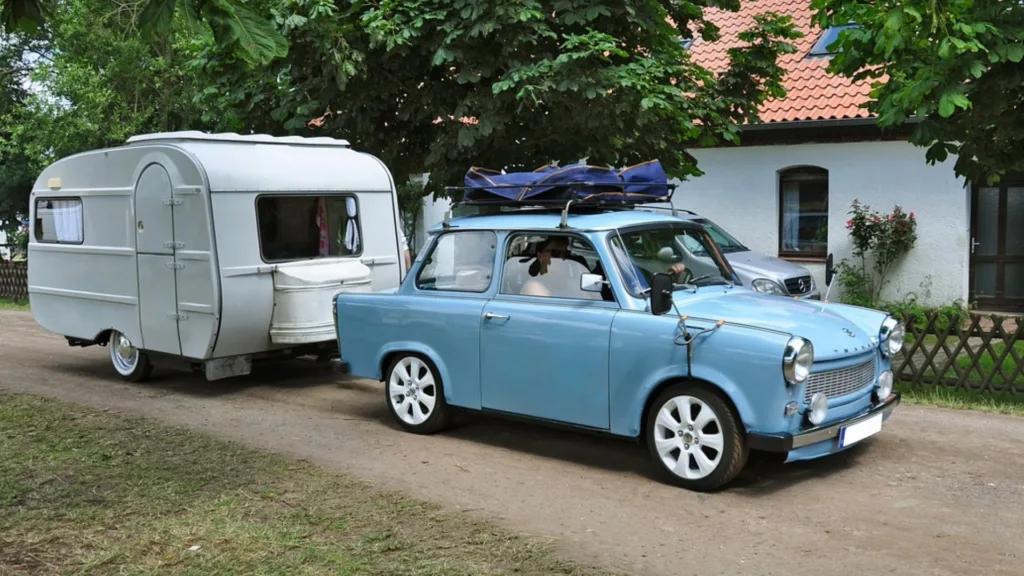The Best Australian Road Trip Guide by Vehicle.
If you’ve recently retired and find yourself with
ample time, consider embarking on a road trip across Australia. Picture
yourself winding through vast desert landscapes, the sun casting long shadows
on red earth.
Explore iconic cities like Sydney, Melbourne, and
Brisbane, where modern skyscrapers meet historic architecture.
Along the way, immerse yourself in Aboriginal
culture, savour local cuisine, and witness the kaleidoscope of colours at
Uluru.
This journey isn’t just about hitting the open
road; it’s about discovering the heart and soul of a continent.
From the sun-drenched beaches of Queensland to the
rugged outback of the Northern Territory, Australia offers a diverse array of
destinations perfect for exploration by vehicle.
Whether you’re snorkelling in the Great Barrier
Reef, marvelling at the ancient majesty of Uluru, or enjoying the urban
delights of Sydney, each location presents unique adventures and challenges for
retiree travellers.
Choosing the right vehicle for your Australian
road trip is crucial to ensure a smooth and enjoyable journey.
For instance, a sturdy 4WD is ideal for navigating
the sandy terrains of Fraser Island or the rugged paths of Kakadu National
Park. Meanwhile, a comfortable sedan might be more suitable for city excursions
or coastal drives along the Great Ocean Road.
Packing wisely is also essential to maximize both
safety and enjoyment on the road. Essential items include sun protection gear,
insect repellent, and a first-aid kit to address health and safety concerns.
For leisure, consider packing a camera or
binoculars to capture Australia’s stunning wildlife and landscapes.
Products such as portable GPS devices and reliable
camping gear can enhance the travel experience, providing convenience and peace
of mind.
As you plan your adventure, remember that
Australia is not just a destination; it’s an experience that connects travellers
with nature, history, and culture.
Whether you’re drawn to the serene beauty of the
Daintree Rainforest or the bustling energy of Bondi Beach, each stop on your
journey promises unforgettable memories.
Table
of Contents:
1.0 Australian
Destination Highlights by Car.
·
Great
Barrier Reef, Queensland.
·
Uluru
(Ayers Rock), Northern Territory.
·
Kakadu
National Park, Northern Territory.
·
Sydney
Opera House, New South Wales.
·
Blue
Mountains National Park, New South Wales.
·
Bondi
Beach, New South Wales.
·
Daintree
Rainforest, Queensland.
·
Fraser
Island, Queensland.
2.0 Choosing
the Right Vehicle for Your Australian Adventure
·
Vehicle
Types and Recommendations.
·
Essential
Packing List for Your Vehicle.
·
3.0
Local Experiences and Activities.
·
Unique
Experiences.
·
Outdoor
Activities.
4.0 Accommodation
and Dining Recommendations.
·
Accommodation
Options.
·
Dining
Recommendations.
5.0 Travel
Tips and Resources.
·
Best
Time to Visit.
·
Transportation
Options.
·
Packing
Essentials.
·
Safety
and Health.
·
Cultural
Etiquette.
6.0 Products
and Gear for Your Australian Road Trip.
·
Navigation
and Communication.
·
Camping
and Outdoor Equipment.
·
Safety
and Emergency Gear.
·
Leisure
and Entertainment.
·
Travel
Comfort.
7.0 Environmental
Considerations and Responsible Travel.
·
Sustainable
Travel Practices.
·
Conservation
Efforts and Volunteering.
·
Landscape
Sensitivity and Respect.
8.0
Reasons Why an Australian Adventure Is Great For Retirees.
9.0
Destinations for Retirees Travelling via Motorhome or Caravan.
10.0
Conclusion.
1.0
Australian Destination Highlights by Car
Exploring Australia by car offers travellers the
opportunity to experience the country’s stunning landscapes, unique wildlife,
and rich cultural heritage.
Explore the below captivating destinations that
reveal the diverse beauty of Australia, our island nation:
1.
Great
Barrier Reef, Queensland:
a.
Known as the world’s largest
coral reef system, the Great Barrier Reef is famous for its vibrant marine life
and stunning coral formations.
b.
Visitors can engage in activities
such as snorkelling and scuba diving to explore this underwater paradise.
2.
Uluru
(Ayers Rock), Northern Territory:
a.
This UNESCO World Heritage site
is a massive sandstone monolith located in the heart of the Northern
Territory’s arid “Red Centre.”
b.
Uluru holds great cultural
significance for the Indigenous Anangu people and offers breathtaking sunrise
and sunset views.
3.
Kakadu
National Park, Northern Territory:
a.
As Australia’s largest national
park, Kakadu is renowned for its rich biodiversity, Aboriginal rock art, and
stunning landscapes.
b.
Visitors can explore waterfalls,
wetlands, and unique wildlife, including saltwater crocodiles and various bird
species.
4.
Sydney
Opera House, New South Wales:
a.
An architectural masterpiece and
one of the most iconic landmarks in Australia, the Sydney Opera House hosts a
variety of performances and events.
b.
Visitors can take guided tours to
learn about its history and design while enjoying views of the Sydney Harbour.
5.
Blue
Mountains National Park, New South Wales:
a.
Known for its dramatic cliffs,
deep valleys, and eucalyptus forests, the Blue Mountains offer numerous hiking
trails and stunning viewpoints.
b.
The park is also home to the
famous Three Sisters rock formation and various wildlife, including kangaroos
and lyrebirds.
6.
Bondi
Beach, New South Wales:
a.
A world-famous beach known for
its golden sands and surf culture, Bondi Beach is a popular destination for
both locals and tourists.
b.
Visitors can enjoy swimming,
sunbathing, and coastal walks along the scenic Bondi to Coogee trail.
7.
Daintree
Rainforest, Queensland:
a.
One of the oldest rainforests in
the world, the Daintree Rainforest is rich in biodiversity.
b.
Visitors can take guided tours to
explore its lush landscapes, spot unique wildlife, and learn about the
Indigenous culture of the area.
8.
Fraser
Island, Queensland:
a.
The world’s largest sand island,
Fraser Island is known for its stunning beaches, crystal-clear lakes, and lush
rainforests.
b.
Visitors can explore the island
by 4WD, swim in Lake McKenzie, and see the famous Maheno Shipwreck.
2.0
Choosing the Right Vehicle for Your Australian Adventure.
Selecting the appropriate vehicle for your journey
across Australia is essential to ensure comfort, safety, and accessibility to
various destinations.
The diverse landscapes and road conditions across
the country mean that different types of vehicles are better suited for
specific regions and activities.
2.1
Vehicle Types and Recommendations.
1.
4WD
Vehicles: Ideal for exploring rugged terrains and
off-road destinations such as Fraser Island and the outback regions, where roads
can be sandy or unsealed. A 4WD provides the necessary traction and durability
for these challenging environments.
2.
SUVs:
Suitable for families or groups travelling long distances, SUVs offer ample
space and comfort. They are perfect for road trips along the Great Ocean Road
or through the Blue Mountains, providing a balance between city and off-road
capabilities.
3.
Sedans:
A good choice for city travel and well-paved routes, sedans are fuel-efficient
and easy to manoeuvre. They are ideal for exploring urban areas like Sydney or
Melbourne and for coastal drives where road conditions are generally excellent.
4.
Campervans:
For those looking to combine transportation with accommodation, campervans
offer a convenient and flexible option. They are particularly popular for long
journeys where travellers wish to stop and camp along the way, such as in
national parks or along remote coastal stretches.
2.2
Essential Packing List for Your Vehicle.
When preparing for a road trip across Australia,
packing the right items can enhance your travel experience and ensure safety:
Safety and Practicality:
·
First-aid kit & Snake Bite
Kit.
·
An Additional Spare tyre (carry 2
instead of 1).
·
Jumper cables & Portable Jump
Starter.
·
Emergency contact numbers and a
satellite phone for remote areas.
·
An Off Road GPS device for
navigation in the more remote areas.
Leisure and Comfort:
·
Camera or binoculars for wildlife
and landscape viewing.
·
Portable chairs and a picnic set
for outdoor meals.
·
A tent and sleeping bags.
·
Books or Kindle for passenger entertainment
during long drives.
Weather and Environment:
·
Sun protection gear, including
hats, sunglasses, and sunscreen
·
Insect repellent, especially for
tropical and bush areas
·
Plenty of suitable clothing for
the selected season of travel.
By choosing the right vehicle and packing
thoughtfully, travellers can fully enjoy the diverse attractions Australia has
to offer, from its bustling cities to its serene natural wonders.
3.0
Local Experiences and Activities.
Australia offers a wealth of unique experiences
and activities that allow travellers to immerse themselves in the local culture
and environment.
Below are some highlights to consider when
planning your journey:
3.1
Unique Experiences.
Aboriginal Cultural Tours: Engage with Australia’s
rich Indigenous heritage through guided tours led by Aboriginal guides.
These tours provide insights into traditional
practices, Dreamtime stories, and the cultural significance of the land.
Visitors can participate in activities like bush
tucker tasting and learning about ancient rock art.
1.
Wildlife
Encounters: Australia is home to unique wildlife that
can’t be found anywhere else. Encourage travellers to visit wildlife
sanctuaries and national parks to see kangaroos, koalas, and platypuses in
their natural habitats. Places like Kangaroo Island and the Daintree Rainforest
offer excellent opportunities for wildlife spotting.
2.
Great
Ocean Road Adventure: A road trip along the Great
Ocean Road is a must-do for its stunning coastal scenery and landmarks like the
Twelve Apostles. Travellers can explore charming seaside towns, enjoy surfing
at famous beaches, and take scenic hikes through lush rainforests.
3.2
Outdoor Activities.
1.
Snorkelling and Diving:
a.
The Great Barrier Reef is a prime
destination for snorkelling and diving enthusiasts. Visitors can explore
vibrant coral reefs and encounter diverse marine life, including colourful
fish, sea turtles, and even reef sharks.
b.
Guided tours are available for
different skill levels.
2.
Hiking and Bushwalking:
a.
Australia’s diverse landscapes
offer numerous hiking opportunities. Popular trails include the Overland Track
in Tasmania, the Larapinta Trail in the Northern Territory, and the Blue
Mountains’ walking tracks.
b.
These hikes provide breathtaking
views and a chance to connect with nature.
3.
Surfing Lessons: You’re never too
old to learn to surf.
a.
With its world-renowned beaches,
Australia is a surfer’s paradise.
b.
Beginners can take surfing
lessons at popular spots like Bondi Beach or Byron Bay, while experienced
surfers can tackle the waves at Bells Beach or Snapper Rocks.
These activities not only provide adventure and
excitement but also offer a deeper connection with Australia’s natural beauty
and cultural richness.
Whether you’re exploring the underwater world of
the Great Barrier Reef or learning about Indigenous traditions, each experience
adds a unique dimension to your Australian road trip.
4.0
Accommodation and Dining Recommendations.
When travelling across Australia, selecting the
right accommodation and dining options can significantly enhance your
experience. Here are some recommendations to suit various preferences and
budgets:
4.1
Accommodation Options.
1.
Luxury Hotels and Resorts:
Australia offers a range of high-end accommodations that provide luxurious
amenities and breathtaking views. Consider staying at iconic hotels like the
Park Hyatt in Sydney, which offers stunning views of the Opera House, or the
luxurious resorts on Hamilton Island in the Whitsundays for a tropical retreat.
2.
Boutique and Eco-Friendly Lodges:
For those seeking unique and sustainable experiences, boutique hotels and
eco-lodges are excellent choices. Properties like Longitude 131° near Uluru
offer luxury tents with minimal environmental impact, while the Daintree Eco
Lodge provides a serene rainforest retreat.
3.
Budget-Friendly Hostels and Motels:
Travellers on a budget can find affordable accommodations in hostels and motels
throughout the country. YHA hostels offer clean and safe options in prime
locations, and many motels provide convenient stops for road trippers looking
for economical lodging.
4.2
Dining Recommendations.
1.
Fine Dining and Gourmet Experiences:
Australia’s culinary scene is vibrant and diverse, with top restaurants known
for their innovative cuisine and use of local ingredients. Consider dining at
establishments like Quay in Sydney or Attica in Melbourne, both renowned for
their exceptional dining experiences and creative dishes.
2.
Local Cafés and Eateries:
To experience Australia’s café culture, explore local cafés and eateries.
Cities like Melbourne are famous for their coffee and brunch spots, while
coastal towns offer fresh seafood and laid-back dining atmospheres.
3.
Food Markets and Street Food:
For a more casual dining experience, visit food markets and street food
festivals. The Queen Victoria Market in Melbourne and the Sydney Fish Market
are excellent places to sample a variety of local and international flavours,
providing a taste of Australia’s diverse culinary offerings.
By choosing accommodations and dining options that
align with your preferences and budget, you can enjoy a comfortable and
memorable journey through Australia’s stunning landscapes and vibrant cities.
5.0
Travel Tips and Resources.
When planning a road trip across Australia, having
the right travel tips and resources can make a significant difference in
ensuring a smooth and enjoyable journey.
This section provides essential advice to help travellers
prepare effectively.
5.1
Best Time to Visit.
1.
Northern Tropical Areas:
The dry season, from May to October, is the best time to visit the northern
regions, such as Queensland and the Northern Territory. During this period, the
weather is more pleasant, with lower humidity and less rainfall, making it
ideal for outdoor activities and exploring natural attractions.
2.
Southern Regions: The
southern parts of Australia, including New South Wales, Victoria, and South
Australia, are most enjoyable during the summer months from December to
February. This is when the weather is warm and conducive to beach activities
and outdoor events.
3.
Consider School Holidays:
Be mindful of local school holidays, as these can affect accommodation
availability and prices. Planning your trip outside of these peak times can
lead to a more relaxed experience and better deals.
5.2
Transportation Options.
1.
Domestic Flights: Given
Australia’s vast size, domestic flights are a convenient way to cover long
distances quickly. Major airlines offer flights between cities and regional
areas, making it easy to access remote destinations.
2.
Car Rentals: Renting
a car is a popular option for exploring Australia at your own pace. Basic car
rentals can start around $30 per day, but prices vary depending on the vehicle
type and location. A 4WD is recommended for off-road adventures, while a sedan
or SUV is suitable for city and coastal travel.
5.3
Packing Essentials.
1.
Climate Considerations:
Australia’s diverse climate means packing should be tailored to the regions you
plan to visit. Include sun protection items like hats, sunglasses, a couple of
beach towels and sunscreen, especially for beach destinations. Remember that
Australia’s seasons are opposite to those in the Northern Hemisphere, so plan
accordingly.
2.
Safety Items: Pack a
first-aid kit, insect repellent, and a reusable water bottle to stay hydrated.
An Off Road GPS, a portable (handheld) GPS or set of maps can be helpful for
navigation in the more remote areas where mobile coverage may be limited or not
exist.
5.4
Safety and Health.
1.
Health Precautions: Be aware of
potential health risks, such as sun exposure and insect bites. Using sunscreen and
insect repellent is advisable, particularly in tropical regions. Staying
hydrated is crucial, especially during outdoor activities.
2.
Emergency Contacts: The universal
emergency number in Australia is triple zero (000) for police, fire, and
ambulance services. It’s important to know this number and have it accessible
during your travels.
5.5
Cultural Etiquette.
Familiarize yourself with local customs and slang
to enhance interactions with Australians.
Understanding common phrases and greetings can
help in social situations and make your travel experience more enjoyable.
Below are 9 tips to help travellers blend in
seamlessly as honorary Aussies:
1.
Master
the Lingo: Swap “hello” for a cheerful “G’day!” and
call everyone “mate.” Bonus points for throwing in a “fair dinkum” now and
then.
2.
Embrace
Vegemite: Spread this salty yeast extract on toast
(thinly!) and pretend it’s your favourite thing ever. Aussies will nod in
approval.
3.
Learn
the Footy Teams: Pick a side, AFL or NRL and
passionately support your chosen team. You’ll get bonus points for wearing
their colours during the season. Triple Bonus points for saying, “I
don’t why but for some reason I just don’t like Collingwood”.
4.
Thongs
Aren’t Shoes: In Australia, “thongs” are flip-flops. Wear
them everywhere, beach, supermarket, fancy dinner. No judgment!
5.
Barbecue
& Bunnings Etiquette: Master the art of the BBQ.
Offer to bring snags (sausages) and enjoy a snag sizzle with newfound friends. Double Bonus points for visiting a Bunnings
Store on a Saturday morning and grabbing a sausage sizzle with onions and bbq
sauce.
6.
Tim
Tams and Tea: Dunk Tim Tams (chocolate biscuits) into
your cuppa (tea or coffee). It’s a national pastime.
7.
Beach
Vibes: Rock a rashie (swim shirt), boardies (board
shorts), and sunnies (sunglasses) at the beach. Bonus points for saying “no
worries” a lot whilst wearing thongs.
8.
Visit
a Pub For Lunch (Counter Lunch): Order a
middy 285ml or a schooner 425ml to wash down a chicken schnitzel between 12noon
and 2pm and chat with the locals.
9.
Appreciate
Aussie Music: From Men at Work, Cold Chisel to Mental As
Anything, explore our music legends. Triple Bonus Points for knowing the words
to “Khe Sanh”
6.0
Products and Gear for Your Australian Road Trip.
Incorporating some quality products into your
travel plans can significantly enhance your road trip experience across
Australia, offering convenience, safety, and enjoyment.
Below are some recommended items and gear to
consider:
6.1
Navigation and Communication.
1.
Portable Off Road GPS Device: A quality
Off Road GPS device is invaluable for navigating Australia’s vast and sometimes
remote landscapes. It ensures you stay on track, especially in areas with
limited mobile coverage. When venturing
into Australia’s remote areas, consider these options:
a.
Garmin Tread XL: A top choice for
off-road enthusiasts, the Garmin Tread XL offers turn-by-turn navigation,
preloaded 3D topographic maps, and InReach technology for global satellite
communication.
b.
Magellan TRX7 CS PRO: Known for
its ruggedness, the Magellan TRX7 CS PRO provides off-grid guidance, detailed
trail maps, and a durable design to withstand harsh conditions.
c.
Lowrance HDS-7 Live Chart
Plotter: While not budget-friendly, the Lowrance HDS-7 Live offers advanced
chart plotting, high-resolution maps, and reliable GPS accuracy.
d.
Garmin Overlander: Designed
specifically for overlanding, the Garmin Overlander features off-road maps,
satellite imagery, and built-in sensors like an altimeter and compass.
e.
Hema Maps HX-2: Hema Maps is
another reputable brand. Their HX-2 offers an all-new Off-Road navigation
function with the highest zoom and the most up-to-date Hema Digital Explorer
map. Whether you’re exploring remote areas or embarking on an off-road
adventure, the HX-2 is your ultimate travel companion. It features over 100,000
Hema-X moderated listings, including more than 40,000 Hema-verified points of
interest (POIs) to enhance your journey.
f.
VMS: To my knowledge it’s Australia’s
leading off-road GPS manufacturer. Their 3DX portable off-road GPS stands out
with features like real-time 3D navigation, elevation profiles, and preloaded
CAMPS11 Premium POIs. It’s a reliable companion for both street and off-road
adventures, providing accurate location services and turn-by-turn directions on
bush tracks
2.
Satellite Phone: For those
venturing into remote regions, a satellite phone provides a crucial
communication link in case of emergencies or when standard mobile networks are
unavailable.
6.2
Camping and Outdoor Equipment.
1.
A Quality
Tent: If you’re planning to camp, invest in a durable
and weather-resistant tent. Look for features like easy setup, ventilation, and
waterproofing to ensure comfort in various conditions.
2.
Portable
Solar Charger: A solar charger can keep your
devices powered without relying on traditional electricity sources, making it
ideal for camping and long drives in remote areas.
6.3
Safety and Emergency Gear.
1.
Comprehensive First-Aid Kit:
A well-stocked first-aid kit is essential for addressing minor injuries and
health issues that may arise during your travels. Be sure to include a snake bite kit as well.
2.
Emergency Car Kit: Equip
your vehicle with an emergency kit that includes items like a flashlight,
flares, a multi-tool, and a fire extinguisher to handle unexpected situations
on the road.
6.4
Leisure and Entertainment.
1.
High-Resolution Camera:
Capture the stunning landscapes and wildlife of Australia with a high-quality
camera. Consider one with features like zoom lenses and image stabilization for
the best results.
2.
Portable Bluetooth Speaker:
Enhance your road trip with music or podcasts using a portable speaker. Look
for waterproof and durable models that can withstand outdoor conditions.
6.5
Travel Comfort.
1.
Ergonomic
Travel Pillow: Ensure comfort during long
drives with a supportive travel pillow. Memory foam options provide excellent
neck support and can improve rest during overnight stops.
2.
Insulated
Cooler Bag: Keep your snacks and drinks fresh with an
insulated cooler bag, perfect for picnics and long journeys where access to
fresh food may be limited.
3.
Portable
Fridge/Freezer: When exploring Australia’s vast
landscapes, having a reliable 12V portable fridge/freezer is a great idea.
Below are six commonly available options you can consider:
a.
Dometic CFF 70DZ Dual Zone
Fridge/Freezer:
i. Capacity:
70L (40L fridge / 30L freezer).
ii. Features:
Large compartments, insulated cover, removable handles.
iii. Reliable
and suitable for extended trips and backed with a 3 year warranty.
b.
Engel MT-V60F 60L Fridge Freezer:
i. Capacity:
60L.
ii. Features:
3-state battery protection, digital control panel, stainless steel construction.
iii. Low
power draw and comes with a 5-year warranty.
c.
Waeco CFX-65W Fridge/Freezer:
i. Capacity:
65L.
ii. Features:
Energy-efficient, digital display, sturdy build.
iii. Dual-zone
capability and provides reliable performance.
d.
Evakool TMX65 Travelmate
Fridge/Freezer:
i. Capacity:
65L.
ii. Features:
Tough polyethylene construction, energy-efficient compressor.
iii. It’s
lightweight and suitable for off-road adventures.
e.
ARB Elements 63L Fridge/Freezer:
i. Capacity:
63L.
ii. Features:
Weatherproof, stainless steel exterior, low power consumption.
iii. Durable
and ideal for extreme conditions.
f.
Companion Xero 75L
Fridge/Freezer:
i. Capacity:
75L.
ii. Features:
Dual compartments, digital controls, energy-efficient.
iii. Spacious
and I think it’s very good value for money.
By incorporating these products and gear into your
travel plans, you can enhance both the practicality and enjoyment of your
Australian road trip, ensuring a memorable and comfortable adventure.
7.0
Environmental Considerations and Responsible Travel.
Travelling responsibly and minimizing
environmental impact is going to be much appreciated by the populace,
especially when exploring a country as ecologically diverse as Australia.
This section provides guidance on how travellers
can engage in sustainable practices during their road trips.
7.1
Sustainable Travel Practices.
1.
Reduce
Plastic Use: Travellers can minimize plastic waste by
using reusable water bottles, shopping bags, and utensils. Many areas in
Australia have initiatives to reduce plastic usage, and visitors can support
these efforts by being mindful of their consumption.
2.
Eco-Friendly
Accommodations: Opt for accommodations that
prioritize sustainability, such as eco-lodges or hotels with green
certifications. These establishments often implement practices like energy
conservation, waste reduction, and water-saving measures.
3.
Responsible
Wildlife Viewing: When encountering Australia’s
unique wildlife, it’s important to follow guidelines that protect animals and
their habitats. Maintain a respectful distance, avoid feeding wildlife, and
support sanctuaries that focus on conservation and rehabilitation.
7.2
Conservation Efforts and Volunteering.
1.
Support Conservation Projects:
Travellers can contribute to conservation efforts by visiting and donating to
national parks and wildlife reserves. These contributions help fund initiatives
that preserve Australia’s natural beauty and biodiversity.
2.
Volunteering Opportunities:
Consider participating in volunteer programs focused on environmental
conservation, such as tree planting or beach clean-ups. These activities
provide meaningful ways to give back to the environment and connect with local
communities.
7.3
Landscape Sensitivity and Respect.
Leave No Trace: Adhere to the “Leave No
Trace” principles by ensuring that all waste is disposed of properly,
staying on designated paths, and minimizing campfire impacts. These practices
help maintain the pristine condition of natural areas for future visitors.
By incorporating these environmental
considerations and responsible travel practices, travellers can enjoy their
Australian road trip while contributing positively to the preservation of the
country’s unique ecosystems and cultural heritage.
8.0
Reasons Why an ‘Aussie Adventure’ Is Great For Retirees.
Exploring Australia offers recently retired
individuals a unique opportunity to embrace adventure, relaxation, and personal
growth.
Below are 18 compelling reasons why this travel
experience is ideal for retirees:
1.
Flexible Schedule:
Retirement provides the freedom to travel without the constraints of work
commitments, allowing retirees to explore Australia at their own pace.
2.
Stunning Landscapes:
Australia’s diverse and breathtaking landscapes, from coastal beaches to rugged
mountains, offer endless opportunities for exploration and appreciation of
nature.
3.
Rich Cultural Heritage:
Engaging with Indigenous cultures through tours and experiences allows retirees
to gain a deeper understanding of Australia’s history and traditions.
4.
Wildlife Encounters:
Australia is home to unique wildlife, such as kangaroos and koalas, making it
an exciting destination for animal lovers eager to see these creatures in their
natural habitats.
5.
Outdoor Activities:
The country offers numerous outdoor activities, including hiking, snorkelling,
and camping, promoting health and wellness among retirees.
6.
Relaxation Opportunities:
Beautiful beaches and serene national parks provide tranquil environments for
relaxation, perfect for retirees looking to unwind.
7.
Gourmet Dining:
Australia’s vibrant culinary scene allows retirees to indulge in fine dining
and local cuisine, enhancing their travel experience.
8.
Social Engagement: Travelling
provides opportunities to meet new people and make friends, whether through
guided tours, local events, or shared accommodations.
9.
Historical Sites: Rich in
history, Australia features numerous historical sites and landmarks, allowing
retirees to explore and learn about the nation’s past.
10. Adventure
Activities: For those seeking adventure, Australia offers
thrilling experiences such as scuba diving, surfing, and hot air ballooning,
catering to various interests and activity levels.
11. Cultural
Festivals: Australia hosts various cultural festivals and
events throughout the year, providing retirees with a taste of local traditions
and celebrations.
12. Comfortable
Climate: With a generally mild climate, Australia offers
pleasant weather for travel, especially during the dry season, making it ideal
for retirees who prefer comfortable temperatures.
13. Scenic
Road Trips: The vastness of Australia allows for
unforgettable road trips, such as along the Great Ocean Road, where retirees
can enjoy stunning coastal views and charming towns.
14. Accessible
Attractions: Many tourist attractions in Australia are
designed to be accessible, ensuring that retirees can enjoy experiences
regardless of mobility levels.
15. Well-Established
Infrastructure: Australia has a well-developed tourism
infrastructure, including accommodations, transportation, and services tailored
to meet the needs of travellers.
16. Photography
Opportunities: With its diverse landscapes and unique
wildlife, Australia is a photographer’s paradise, allowing retirees to capture
stunning memories of their travels.
17. Educational
Experiences: Many tours and activities offer educational
components, allowing retirees to learn about topics such as marine biology,
conservation, and Indigenous history.
18. Personal
Growth: Travelling fosters personal growth and a sense
of adventure, encouraging retirees to step outside their comfort zones and
embrace new experiences.
9.0
Destinations for Retirees Travelling via Motorhome or Caravan.
Travelling around Australia in a motorhome or by
towing a caravan is an excellent option for retirees, offering flexibility,
comfort, and the ability to explore at leisure.
Below are some of the top destinations in
Australia cater to this mode of travel, along with recommended caravan parks
for each location:
9.1
Great Barrier Reef, Queensland:
1.
Cairns Coconut Holiday Resort:
This family-friendly resort offers spacious sites and a range of amenities,
including pools, a water park, and easy access to the Great Barrier Reef tours.
2.
Port Douglas Glengarry Holiday Park:
Located near Port Douglas, this park features well-maintained facilities and is
a short drive to the reef and other attractions.
3.
Big4 Cairns Crystal Cascades Holiday Park:
Nestled in a rainforest setting, this park provides a peaceful environment with
access to natural swimming holes and is close to Cairns.
9.2
Uluru (Ayers Rock), Northern Territory:
1.
Ayers Rock Campground:
This campground offers powered and unpowered sites with facilities close to
Uluru, making it an ideal base for exploring the iconic landmark.
2.
Longitude 131°: While
more luxurious, this eco-friendly resort provides a unique glamping experience
with stunning views of Uluru, suitable for those looking for comfort.
3.
Outback Pioneer Hotel & Lodge:
This accommodation offers both lodge and camping options, providing a mix of
comfort and outdoor experience near Uluru.
9.3
Kakadu National Park, Northern Territory:
1.
Cooinda Lodge Kakadu:
This lodge offers powered sites and is close to the Yellow Water Billabong,
providing easy access to wildlife tours and scenic views.
2.
Kakadu National Park Campgrounds:
Various campgrounds within the park, such as Merl Campground, provide basic
amenities and a chance to immerse in the natural surroundings.
3.
Gagudju Lodge Cooinda:
This lodge offers a mix of accommodation styles, including camping facilities,
and is well-positioned for exploring Kakadu’s attractions.
9.4
Sydney Opera House, New South Wales:
1.
Sydney Lakeside Holiday Park:
Located in North Narrabeen, this park offers a tranquil setting with easy
access to Sydney’s attractions, including the Opera House.
2.
Big4 Sydney Holiday Park:
Situated in the suburb of Mascot, this park provides family-friendly amenities
and is a short drive or train ride to the city center.
3.
Lane Cove National Park:
This park offers camping facilities in a natural setting, providing a peaceful
retreat while still being close to Sydney’s attractions.
9.5
Blue Mountains National Park, New South Wales:
1.
Katoomba Falls Tourist Park:
This park offers powered sites and is conveniently located near the famous
Three Sisters and hiking trails.
2.
Blue Mountains Holiday Park:
Located in the picturesque town of Blackheath, this park provides a range of
accommodation options and easy access to the Blue Mountains’ natural beauty.
3.
Blackheath Glen Tourist Park:
This park is set in a beautiful location with powered sites and is close to
various walking trails and scenic lookouts.
9.6
Bondi Beach, New South Wales:
1.
Bondi Beach Holiday Park:
Located just a short walk from the beach, this park offers a prime location for
enjoying the sun and surf.
2.
Big4 Sydney Park:
Situated a bit further from Bondi, this park offers excellent facilities and
easy access to public transport for visiting the beach.
9.7
Daintree Rainforest, Queensland:
1.
Daintree Rainforest Village:
This park offers powered sites in a lush rainforest setting, providing easy
access to the Daintree’s natural attractions.
2.
Daintree Riverview Lodge:
This lodge offers camping facilities alongside comfortable accommodations, with
opportunities for wildlife spotting.
3.
Daintree Rainforest Retreat:
This eco-friendly retreat provides caravan sites and is located near the
Daintree River, perfect for exploring the rainforest.
9.8
Fraser Island, Queensland:
1.
Fraser Island Holiday Park:
Located in Kingfisher Bay, this park offers powered sites and easy access to
the island’s attractions via ferry.
2.
Cathedrals on Fraser:
This park provides a unique camping experience with direct access to the
island’s famous sand dunes and beaches.
3.
Happy Valley Resort:
Located on Fraser Island, this resort offers caravan sites and is close to
various natural attractions, including lakes and hiking trails.
Travelling in a motorhome or caravan allows
retirees to experience the freedom of the open road, with the flexibility to
choose their itinerary and the comfort of having their own space.
This mode of travel is well-suited to exploring
Australia’s diverse landscapes and attractions, making it an ideal choice for
retirees seeking adventure and relaxation.
10.0
Conclusion.
Embarking on a road trip across Australia presents
retirees with a unique opportunity to explore the country’s stunning
landscapes, rich cultural heritage, and diverse wildlife.
With the freedom to travel at their own pace,
retirees can fully immerse themselves in the experiences that Australia has to
offer, from the vibrant underwater world of the Great Barrier Reef to the
iconic beauty of Uluru.
This journey is not just about the destinations;
it’s about the connections made along the way.
Engaging with Indigenous cultures, participating
in local activities and enjoying the culinary delights of various regions
enrich the travel experience.
The well-established infrastructure for caravans
and motorhomes makes it convenient for retirees to access a variety of
accommodations and amenities, ensuring comfort and safety throughout their
adventure.
As retirees plan their travels, they can take
advantage of the wealth of resources available, including travel tips, packing
essentials, and recommendations for local experiences.
By embracing sustainable practices and respecting
the environment, retiree travellers can contribute positively to the
preservation of Australia’s natural beauty and cultural heritage.
A road trip through Australia is more than just a
journey; it’s an adventure filled with discovery, relaxation, and personal
growth.
With careful planning and an open mind, retirees
can create lasting memories and enjoy the freedom of the open road, making
their Australian adventure truly unforgettable.








